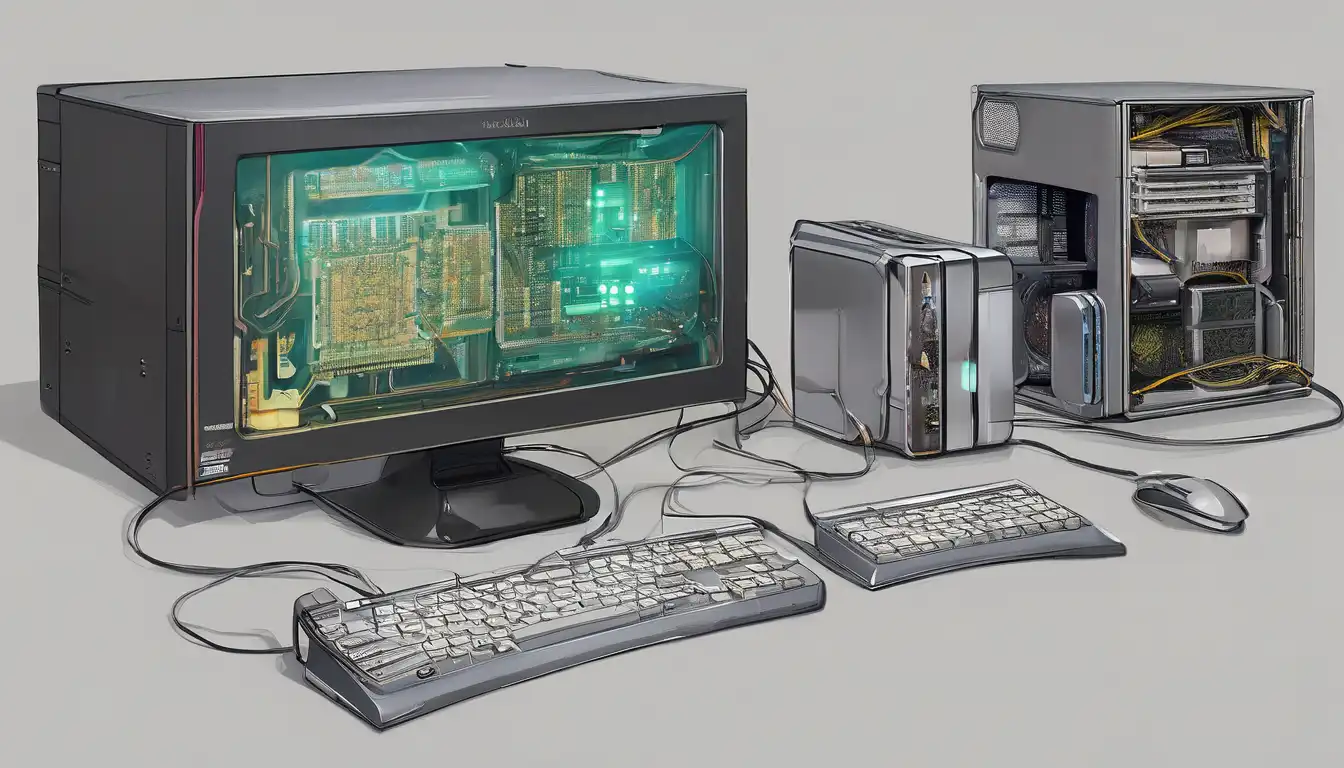Revolutionary Advances in Computer Hardware Technology
The landscape of computer hardware technology is undergoing unprecedented transformation, with innovations emerging at an accelerated pace. From quantum computing breakthroughs to AI-optimized processors, the latest developments are reshaping how we interact with technology and pushing the boundaries of computational power. These advancements not only enhance performance but also address critical challenges in energy efficiency, thermal management, and sustainability.
Next-Generation Processor Architectures
Modern processors are evolving beyond traditional CPU designs, incorporating specialized cores for specific workloads. The latest innovations include heterogeneous computing architectures that combine high-performance cores with efficiency cores, allowing for dynamic resource allocation based on task requirements. Major manufacturers are pushing the boundaries with 3D stacking technology, where multiple layers of transistors are vertically integrated, dramatically increasing transistor density while reducing power consumption.
Quantum computing represents perhaps the most revolutionary development in processor technology. While still in early stages, recent breakthroughs in qubit stability and error correction are bringing practical quantum computing closer to reality. These systems promise to solve complex problems that are currently intractable for classical computers, with potential applications in drug discovery, climate modeling, and cryptography.
Memory Technology Evolution
The memory hierarchy is experiencing significant innovations across all levels. DDR5 memory has become mainstream, offering double the bandwidth of previous generations while operating at lower voltages. More importantly, new non-volatile memory technologies like 3D XPoint and MRAM are blurring the lines between traditional RAM and storage, enabling persistent memory that retains data without power while offering near-RAM speeds.
Storage technology continues its rapid evolution with PCIe 5.0 SSDs delivering unprecedented transfer speeds exceeding 14 GB/s. The adoption of QLC NAND flash has made high-capacity SSDs more affordable, while emerging technologies like computational storage integrate processing capabilities directly into storage devices, offloading tasks from the main CPU and improving overall system efficiency.
Graphics and AI Acceleration
Graphics processing units have evolved beyond their original purpose, becoming essential for AI training and inference workloads. The latest GPUs feature dedicated tensor cores optimized for matrix operations, the fundamental building blocks of neural networks. Ray tracing acceleration has become standard, enabling real-time photorealistic rendering in gaming and professional applications.
Specialized AI accelerators are emerging as a distinct category of hardware, designed specifically for machine learning workloads. These processors often feature novel architectures optimized for the sparse, parallel computations common in neural networks, delivering significant performance and efficiency improvements over general-purpose processors for AI tasks.
Connectivity and Interface Innovations
The latest hardware innovations extend to connectivity standards, with USB4 becoming widespread and offering 40 Gbps transfer speeds alongside DisplayPort 2.0 support. Thunderbolt 4 continues to push the boundaries of peripheral connectivity, while Wi-Fi 7 promises multi-gigabit wireless speeds with improved latency and reliability.
PCI Express 6.0 represents the next leap in internal connectivity, doubling the bandwidth of PCIe 5.0 to 256 GB/s in x16 configurations. This increased bandwidth is crucial for supporting the next generation of GPUs, storage devices, and network adapters, ensuring that connectivity doesn't become a bottleneck in high-performance systems.
Cooling and Power Management
As component densities increase, thermal management has become increasingly critical. Advanced cooling solutions are emerging, including vapor chamber designs, liquid cooling systems with integrated pumps, and phase-change materials that absorb heat more efficiently than traditional thermal compounds. Some manufacturers are even exploring immersion cooling, where components are submerged in non-conductive fluids for maximum heat dissipation.
Power delivery systems have also seen significant innovation, with digital voltage regulation modules offering finer control over power distribution and improved efficiency. Smart power management features dynamically adjust voltage and frequency based on workload demands, optimizing performance while minimizing energy consumption.
Form Factor Innovations
The physical design of computer hardware is evolving to meet changing user needs. Mini-ITX and smaller form factors continue to gain popularity for compact builds, while new standards like the ATX12VO specification redefine power supply design for improved efficiency. Modular component designs allow for easier upgrades and repairs, addressing concerns about electronic waste and sustainability.
Server and data center hardware is also undergoing transformation, with open compute project designs gaining traction and specialized hardware emerging for edge computing applications. These innovations enable more efficient deployment of computing resources closer to where data is generated and consumed.
Future Directions and Emerging Technologies
Looking ahead, several emerging technologies promise to further revolutionize computer hardware. Neuromorphic computing, which mimics the structure and function of the human brain, offers potential breakthroughs in energy efficiency for certain types of computations. Photonic computing, using light instead of electricity for data transmission, could overcome current limitations in speed and heat generation.
Advanced materials like graphene and carbon nanotubes may eventually replace silicon in transistor fabrication, enabling even smaller feature sizes and higher performance. Meanwhile, research into DNA-based data storage suggests possibilities for unprecedented storage densities, though practical implementation remains years away.
Impact on Various Industries
These hardware innovations are having profound impacts across multiple sectors. In healthcare, advanced computing hardware enables real-time medical imaging analysis and drug discovery simulations. The financial industry benefits from accelerated trading algorithms and risk modeling, while creative professionals enjoy faster rendering and more complex simulations.
The gaming industry continues to push hardware demands, driving innovations in real-time graphics and physics simulation. Scientific research benefits from increased computational power for climate modeling, particle physics, and genomic analysis. As hardware capabilities expand, so too do the possibilities for innovation across all fields of human endeavor.
The rapid pace of hardware innovation shows no signs of slowing, with each breakthrough opening new possibilities for computation and interaction. As we look to the future, the continued evolution of computer hardware promises to enable applications we can only begin to imagine, transforming how we work, create, and connect in an increasingly digital world.
